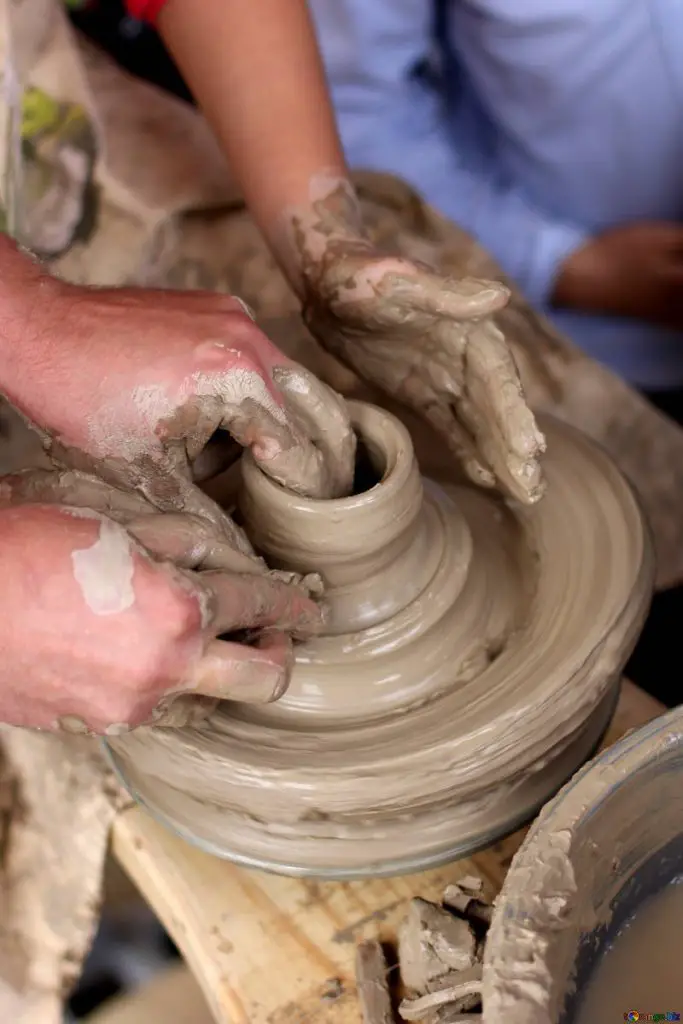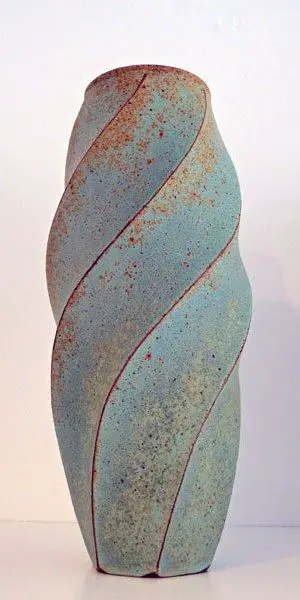I strongly believe one of the easiest things to do is twisted pottery otherwise called “pottery with a twist”. Of course, without the right tools and equipment, it can be tedious and virtually impossible to create. Twisted pottery is created with an extruder. An extruder is a machine that pushes or draws certain materials through a cross-sectional die to form specific shapes. Items that can be extruded include metals, polymers, ceramic clays and foodstuff such as pasta.

In creating pottery pieces, the use of extruders can be traced back to as early as 1619 when an Englishman named John Etherington built the first hand-operated extruder for creating bricks. Extruders are still used to create twisted pottery pieces today for the manufacturing of ceramic roof, wall and floor tiles, bricks and in the most basic form, for pugging, de-airing and forming clay into consistent blocks that fit into boxes for shipping. You can always get your extruder from amazon by clicking here.
Ceramic artists use extruders today for creating consistent coils, slab strips, test tiles, and irregular continuous shapes for hand-building complex forms. Each artist uses the simple extruding tool developed for the industry to transform clay into personal and expressive forms.
HOW TO TWIST OR FACET POTTERY
Twisting pottery is also known as faceting pottery. Twisting the walls of pots is a great way to change the surface of a piece. The facets can be highlighted with atmospheric firings and glazes that break on high points. There are many ways to twist a pottery piece – wet or leather hard, with a wire or a special faceting tool, with a straight wire or a curly wire. Each choice will give you a different final look. I do have a personal preference for faceting while wet.
Once you have mastered throwing clay on the pottery wheel, you can get a little tired of round pots. Faceting pottery is a fun way to fight “round pot boredom.” Many potters facet on stiffened up pots, but sometimes I prefer faceting or twisting before taking the pot off the wheel. This is because I love the spontaneity and the fact that I can continue throwing from the inside and add some movement.
Faceting can be done in many ways and each will produce its unique look. Anything that cuts and twists (especially extruders) can be used and at any stage (from wet to leather hard even to the bisque and fired pot stage–power tools such as sanders and sandblaster are needed for the latter).
The easiest way to get it done is to throw the pot on a wheel. The wall of the pot should thicker than normal but not too thick. A half-inch thick is usually enough but as with normal throwing, pots tend to be thicker at the bottom and thinner where the potbellies out. At the soft leather hard stage paddle the rough shape you desire. For deeper cuts paddle more and you might have to go back and paddle it a few times as the pot stiffens.
In this article, I have discussed the use of extruders in creating twisted pottery and how you can do pottery with a twist. As a beginner, you should try to facet or twist your next projects to master this art.








